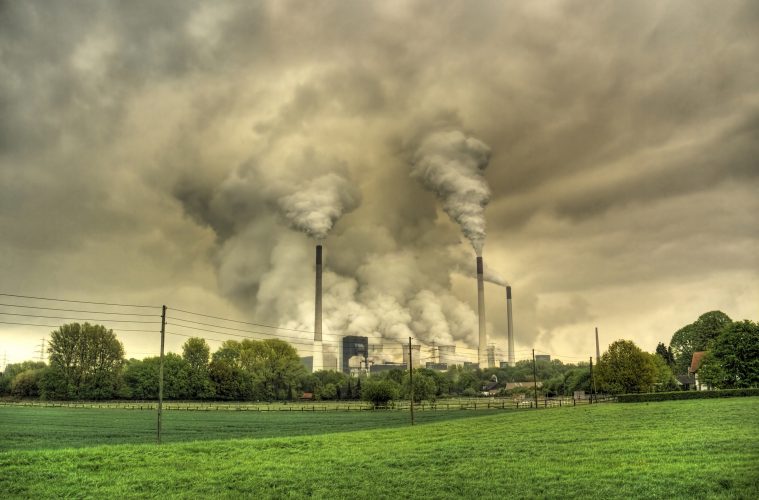by Ole Jakob Weber
What are today’s common goals for the European project? Judging from daily politics and the newspapers: there are very few. But judging from the minds of Europeans, a different picture arises. According to Eurobarometer, which monitors public opinion in the EU on behalf of the European Commission, Europeans have consistently ranked climate change among the most serious problems facing the world, while affirming the need for EU-wide measures to tackle this issue. In fact, there already is an EU-wide mechanism in place to combat climate change: the EU Emissions Trading Scheme (ETS).
In simple terms, the ETS places a general cap on the amount of greenhouse gas emissions that European industries can release into the atmosphere while making emission certificates tradable between companies, often called “cap and trade.” Every emission certificate constitutes a “right to pollute,” so to speak, with emission allowances (EUAs) as its currency. Companies can use or trade these allowances while adhering to the predetermined limit on total emissions.
In recent years, the governance of emissions has become a rather technical issue, which has failed to incite broader debate. Yet the price of emissions has remained very low within the ETS, making it effectively cheaper for firms to buy allowances than to switch to greener technologies.
European leaders have taken note of this trend, and some have called for reform, including French President Emmanuel Macron. In his speech on the future of European integration, held at the Sorbonne in September 2017, Macron addressed the issue as one of the central challenges to achieving a better state of the Union and called for a reform of the ETS. In an effort to renew the EU-wide discussion on climate change and effective caps on emissions, the proposed reform should result in a fair and just price for carbon emissions. His proposal resonated with the demands of many researchers, who regard the ETS as one of the most promising tools for a significant reduction of greenhouse gas emissions. But, on the other hand, the ETS has long suffered from ineffectiveness. So where did it all go wrong? And what can be done today to bolster the scheme’s impact?
The Kyoto protocol of 1997 was the first international document that obliged signatory states to stick to agreed emission benchmarks. The historic agreement was a signal to the EU to develop its own mechanism to ensure reductions. From this, the ETS was born, whose first testing period began eight years later in 2005.
In its broadest sense, the ETS is a market-based mechanism which gives out emission allowances (EUA) to member states and energy-intensive industries. The EUA, technically a “right to pollute,” puts a price on CO2 that is determined by both supply and demand. The concept relies on the framework elaborated by Ronald Coase, the Nobel laureate in economics in 1991, who worked on social cost and negative externalities, such as environmental pollution. Under the assumption of a perfect market, the model predicts an optimal solution which erases the harmful effects of pollution, thus inciting companies to switch to greener technologies and pollute less.
But the ETS has not worked out in this way. Derivative markets for futures and options have emerged since 2005, shifting market power away from big energy companies. Instead, hedging and speculation appear to guide the price of the allowances, as a 2017 study in the Cambridge Journal of Economics points out. CO2 has thus become a simple commodity, like coal or gas, while the market for emissions no longer serves its original purpose. The assumption of an ideal allocation can no longer be sustained.
There are other problems, too. Although a relatively stringent cap was introduced in 2008 by the European Commission to put more pressure on companies to lower emissions, the global financial crisis reduced overall energy demand and thus the price of allowances. Since then, a surplus of allowances in the market has appeared, which massively reduces the incentives for companies to invest in green technologies — they would rather buy pollution rights for a very low price.
So how can the EU build a future for the ETS? After a first attempt to fix the dysfunctional market by artificially withholding allowances from the market for some time — so-called “backloading” — had failed, the EU as well as non-governmental organizations increasingly engaged in pointing out different reform scenarios.
The general problem of the ETS remains its low price per allowance, which keeps the EU from promoting innovation and thus a transition towards low-carbon technology. Only higher carbon prices can change the incentives for firms and guide them towards investments in “green” means of production, which can become profitable. But despite its failures and setbacks, the ETS is a marketplace where scarcity is governed by political decisions. This creates room for different proposals for solving the problem.
First, the Commission has put forward the framework of a Market Stability Reserve. The reform plan consists, in essence, of an artificial shortage of unallocated allowances in the short term. The Commission would simply skim off allowances and remove them from auctions in the following year whereas, in the long run, the cap remain the same. This proposal is, however, flawed: the method used to determine the surplus is based on outdated data, which lags behind the actual surplus by two years and could thus lead to an overestimation of hedging volumes. Effectively, this would lead to an even bigger uncertainty with regards to future investments.
Some prominent NGOs and think-tanks are critical of these proposals. They see the major problem in the inability of the ETS to guarantee a minimum price. Drawing from the experience of the US Regional Greenhouse Gas Initiative, they propose a price collar in which a minimum price could be set to address the problem of the weak price signal. In combination with a price ceiling, and releasing additional allowances if the maximum price is reached, this mechanism could erase the uncertainty on the demand side and stabilize prices on a higher level, according to a Euro-CASE policy paper.
The most radical proposals include a total readjustment of the cap. It is the only measure which could reflect actual emissions, but it would imply a dramatic shift in the year of its implementation. But strong lobbying activities by heavy industry, which fears a massive shift to higher CO2 prices and therefore a danger to their existing business models, have prevented the European Parliament from accepting proposals of this kind.
There is, nevertheless, reason for careful optimism. Scholars agree that, albeit slowly, European industries are realizing “that the counterfactual to the ETS could be worse,” as a study by Frank Convery and Luke Redmond summarized. The Commission could make use of this lack of politically viable alternatives and increase the price pressure within the mechanism. Measures of this type, however, need to be well-balanced to prevent “carbon leakage,” the phenomenon of European industries moving to less regulated areas outside of the EU.
Still, further discussion of reform proposals should be prioritized and revived. Inciting a debate should be encouraged, even outside the Commission. There is little doubt within the international community that climate change is a sizable threat to the future of the planet even if current policies do not necessarily reflect this belief. The EU — indeed, the whole world — has long awaited creative solutions. The Union and its emissions trading system have now assumed a leading role in employing market-based solutions to tackle the phenomenon. This, in turn, comes with an even greater responsibility to critically guide and, if necessary, reevaluate the cornerstones of this ambitious project. The numerous spin-off projects that are inspired by the ideas of an ETS, namely in China, show the great need for ideas that work.
There can be no doubt that Europe needs a renewed commitment to the common goals of inciting the transition to a low-carbon future, especially with regards to the reduction goal of 40% by 2030, which now seems more ambitious than ever. ♦
Ole Jakob Weber is studying political science and economics in Munich. During his exchange to Sciences Po Paris, he worked on current issues in sustainable development. His interests further include multilateral policy-making and democratic theory.

